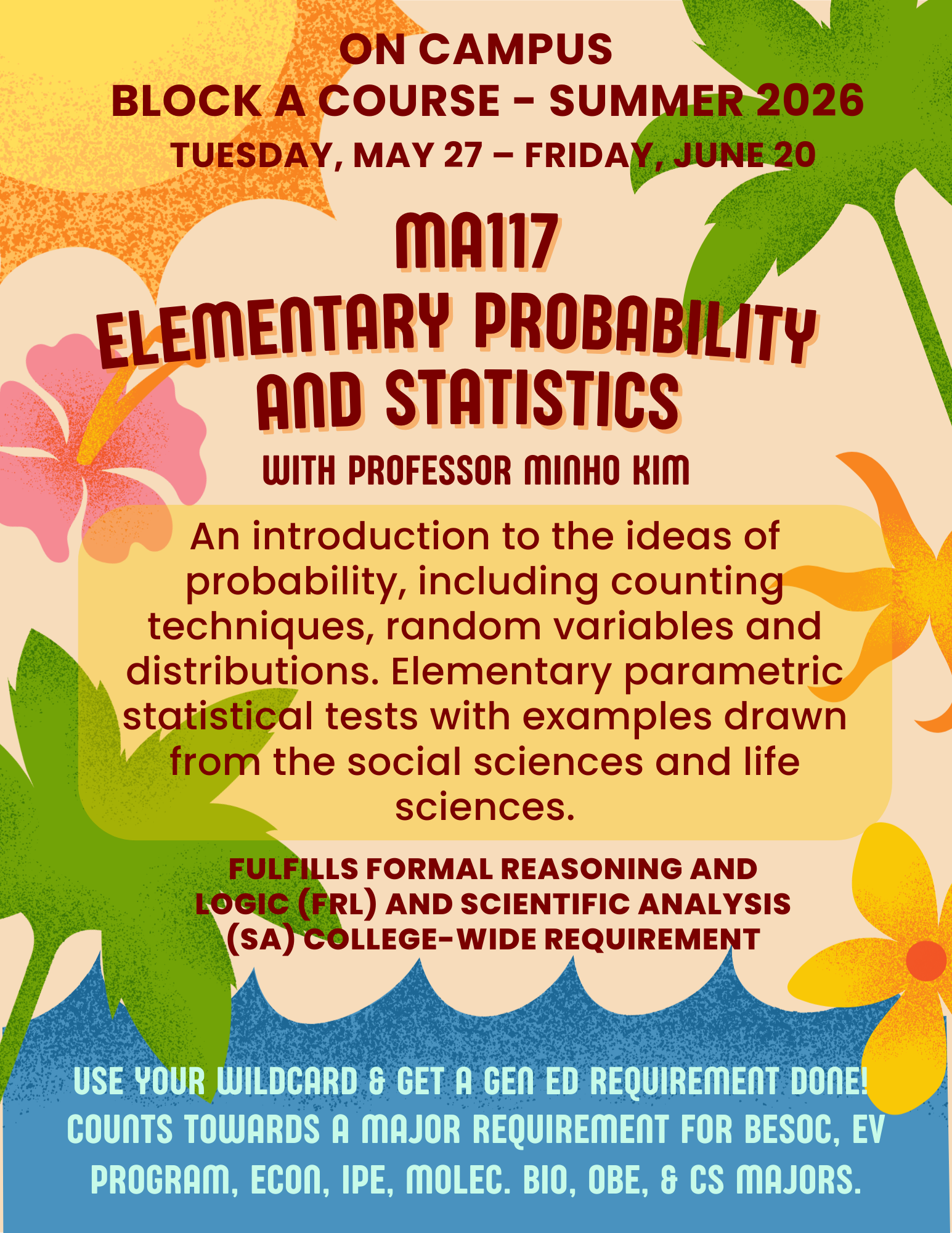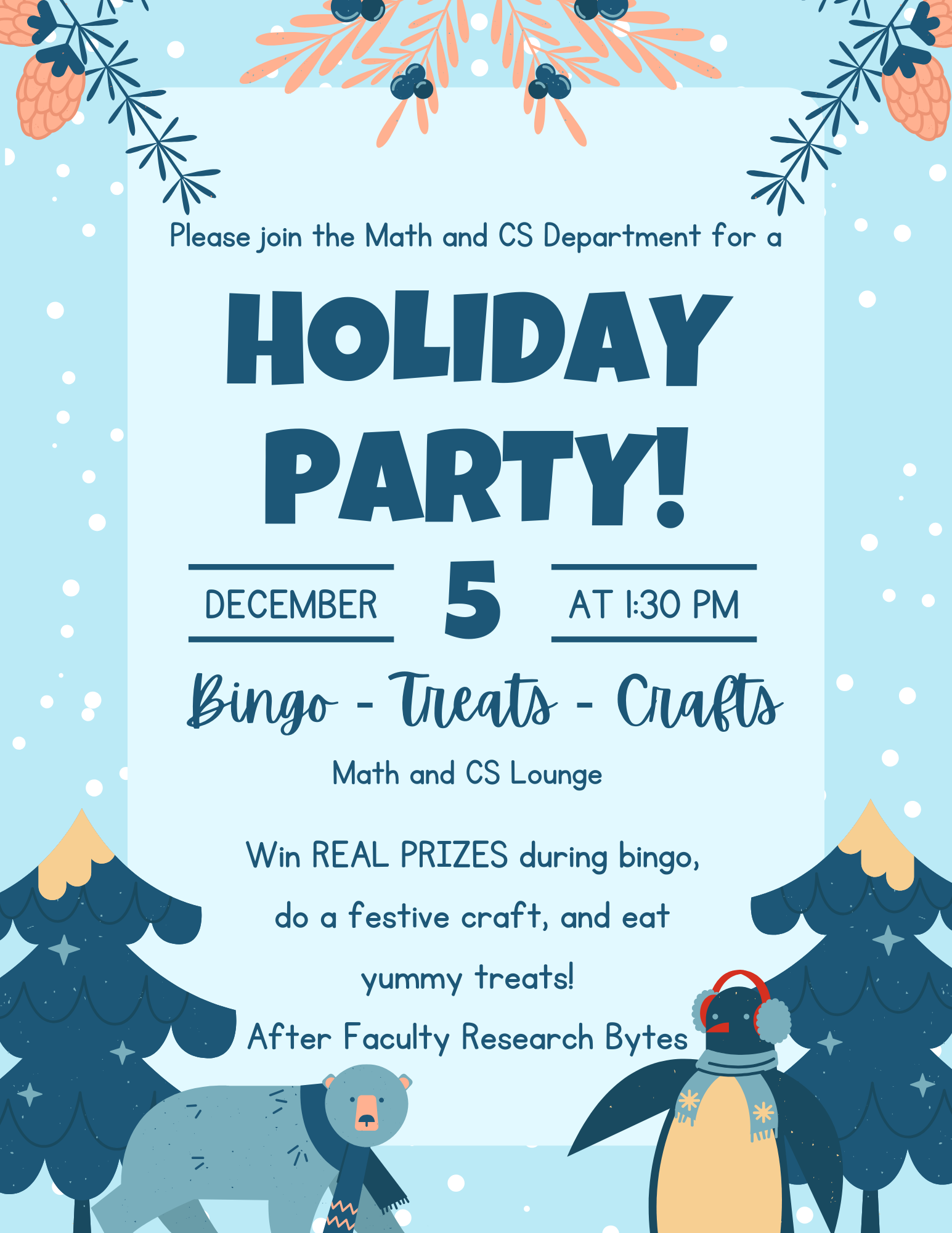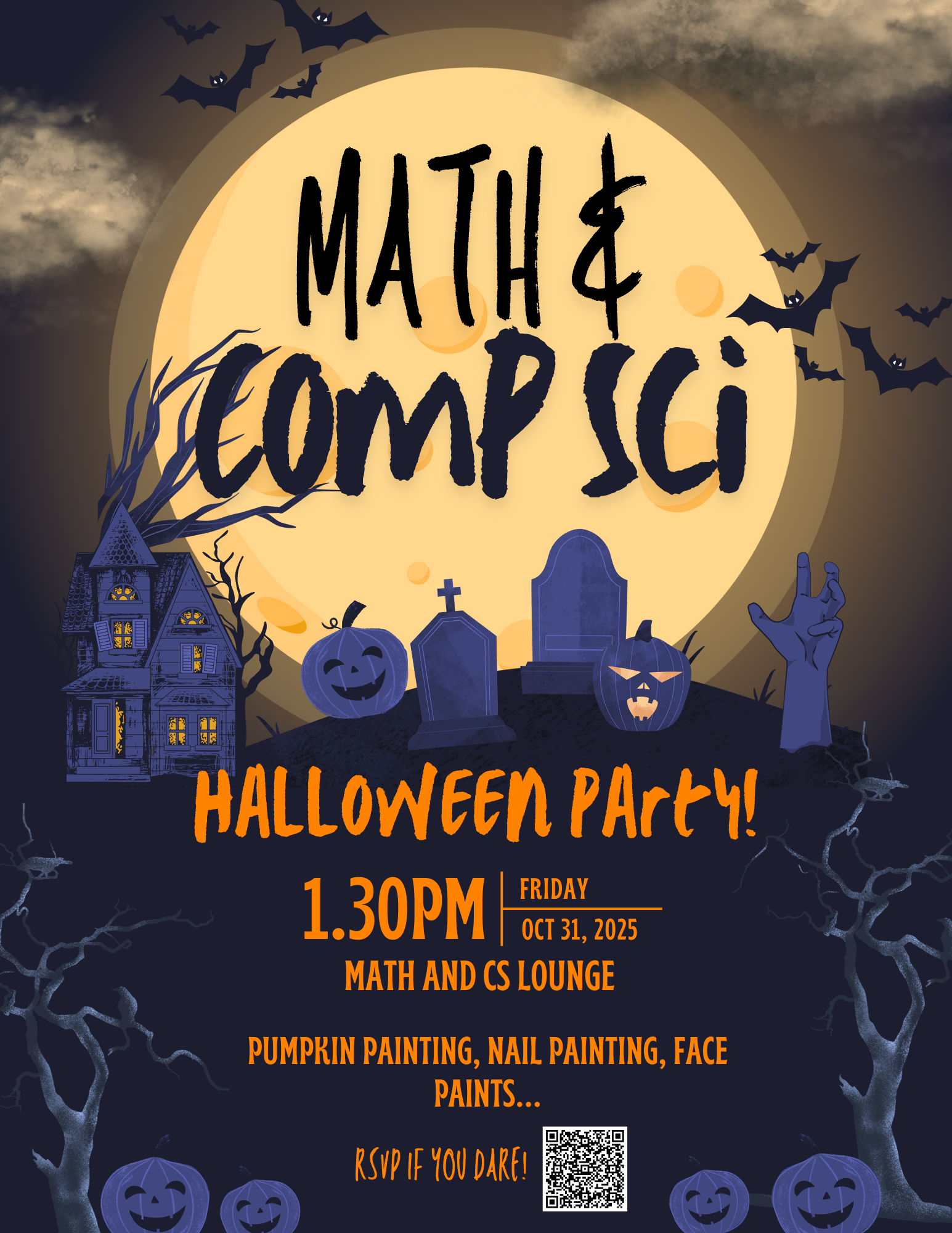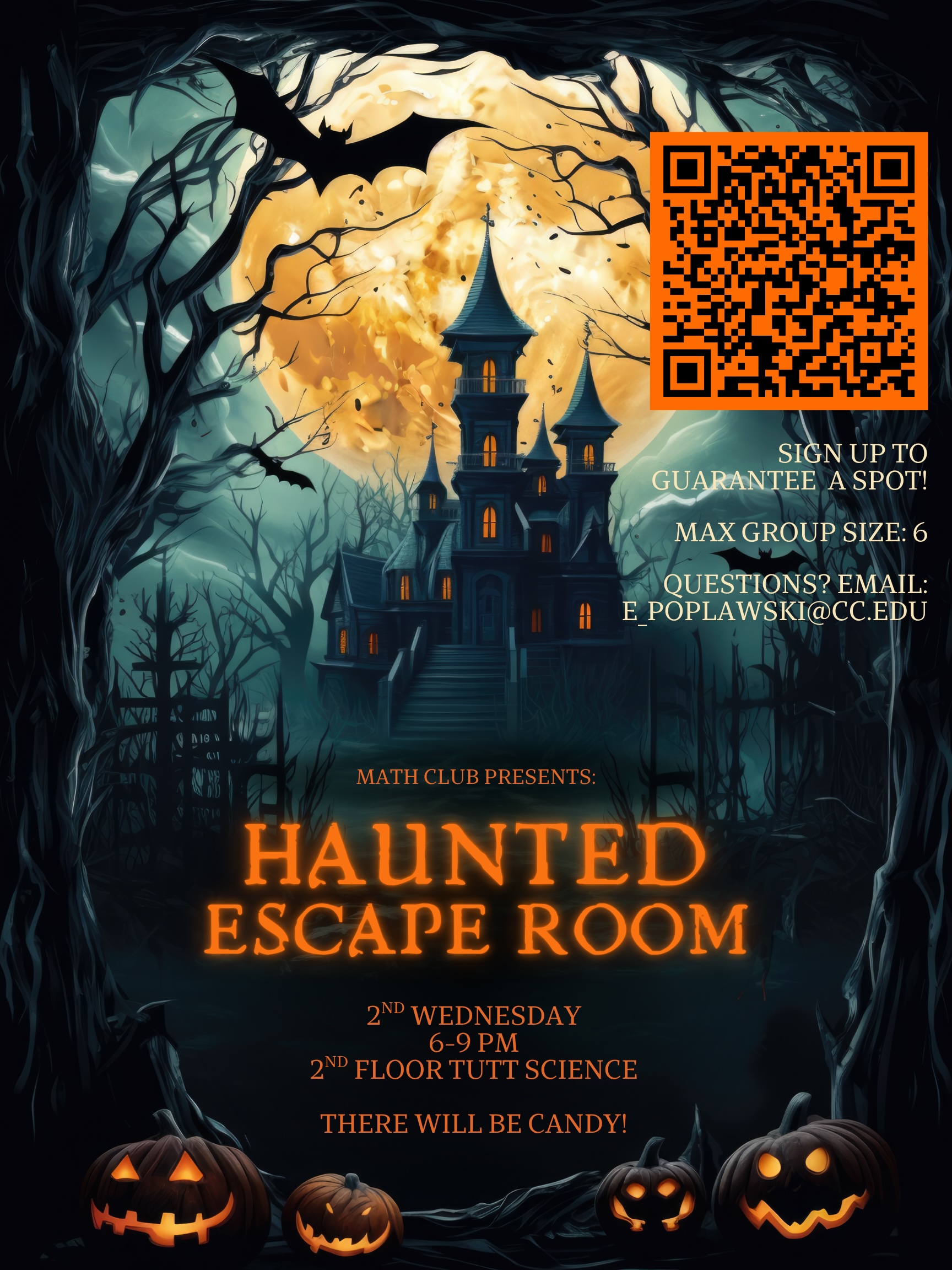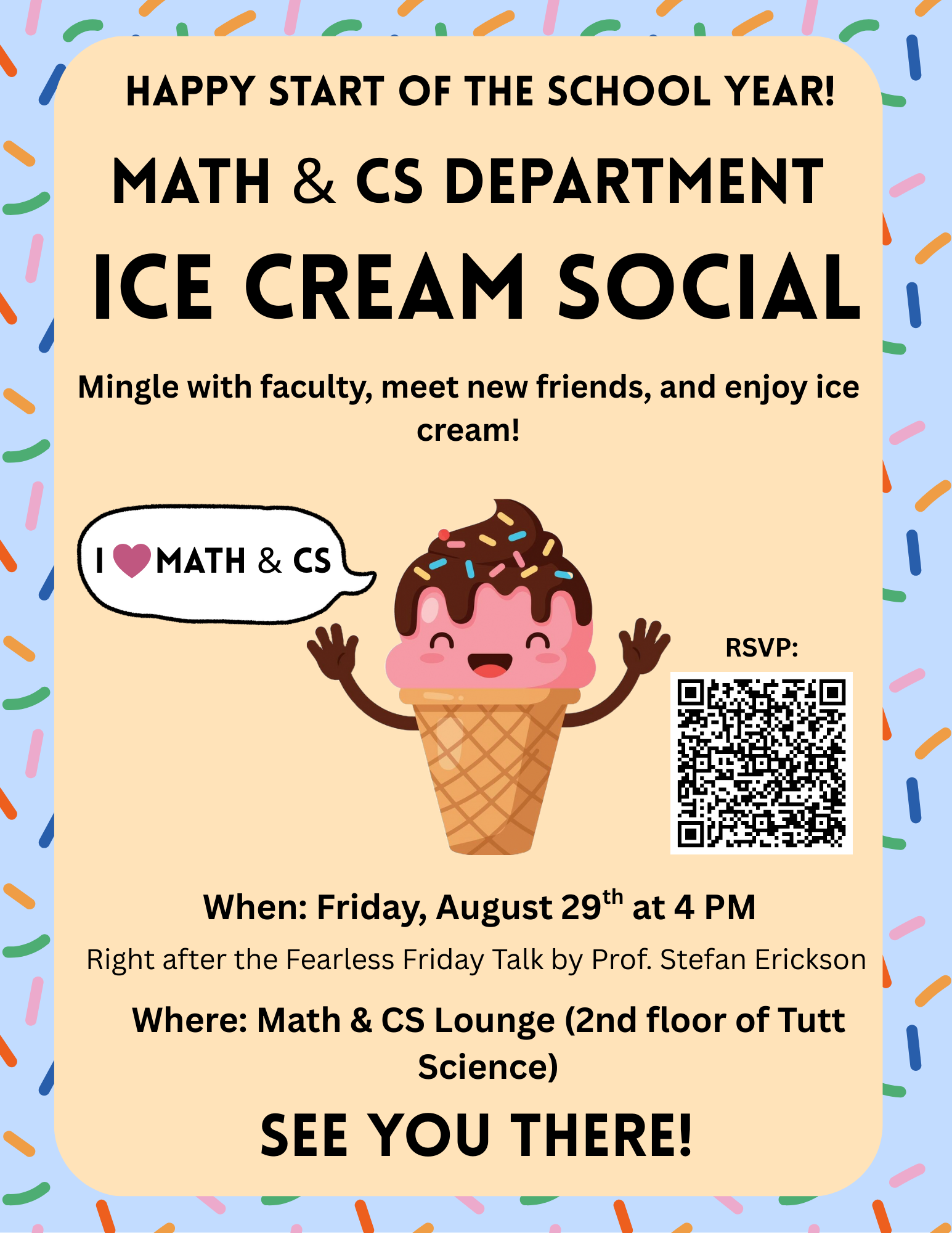News & Events
2025 - 2026
2/21/26 Undergrad Mathematics Conference
The 23rd annual Pikes Peak Regional Undergraduate Mathematics Conference will take place on Saturday, February 21st at Colorado College in Colorado Springs, CO.
Deadline to submit an abstract: Tuesday, February 10th
Deadline to register: Wednesday, February 18th
Questions? Please contact one of the co-organizers:
Dr. Ike Agbanusi, Dr. Stefan Erickson, or Dr. Molly Moran
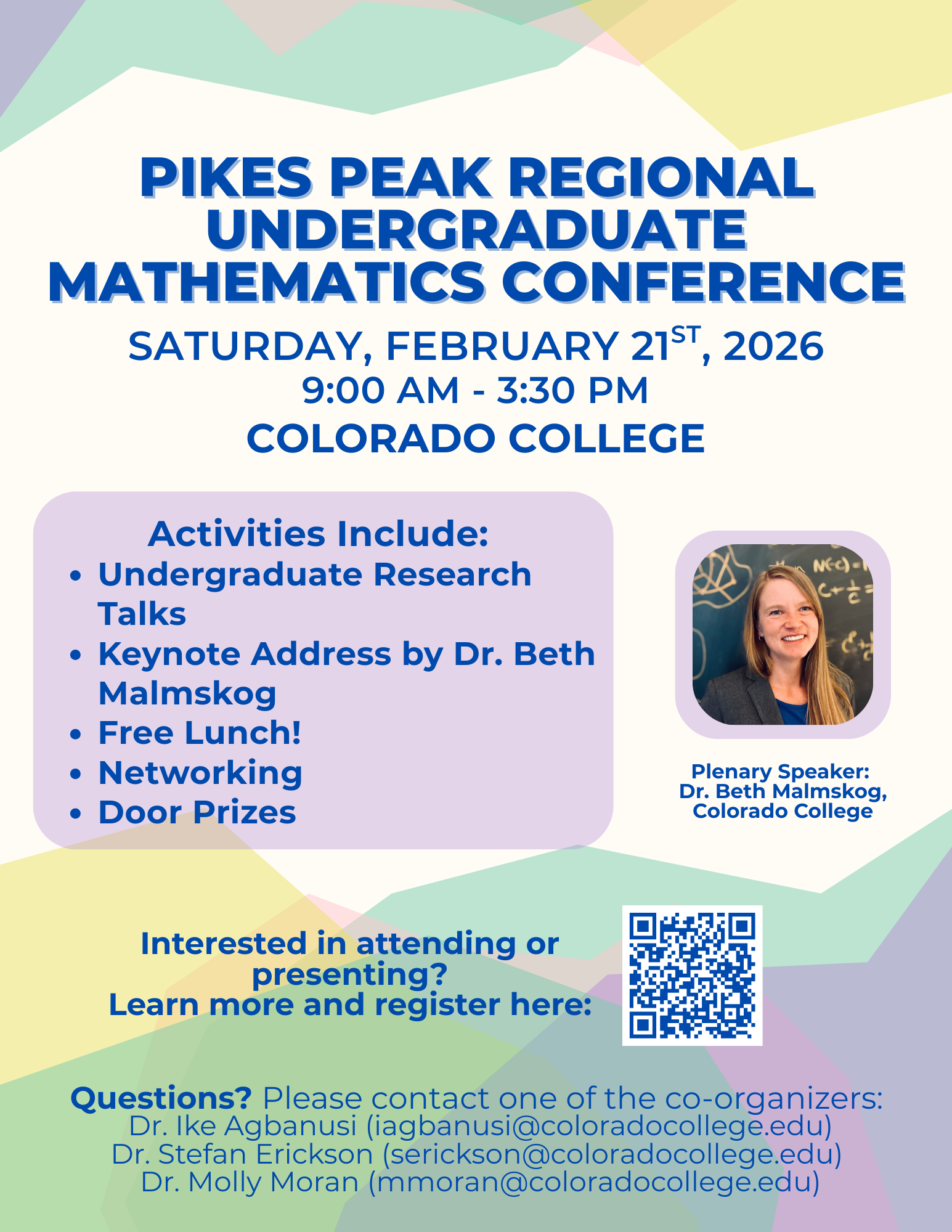
12/6-7/25 Hackathon
12/5/25 Holiday Party
10/31/25 Halloween Party
10/29/25 Escape Room
10/3/25 Summer Research Poster Fair
1:30 - 3:00 pm, following the Homecoming Fearless Friday
1st and 2nd Floor Atriums, Tutt Science
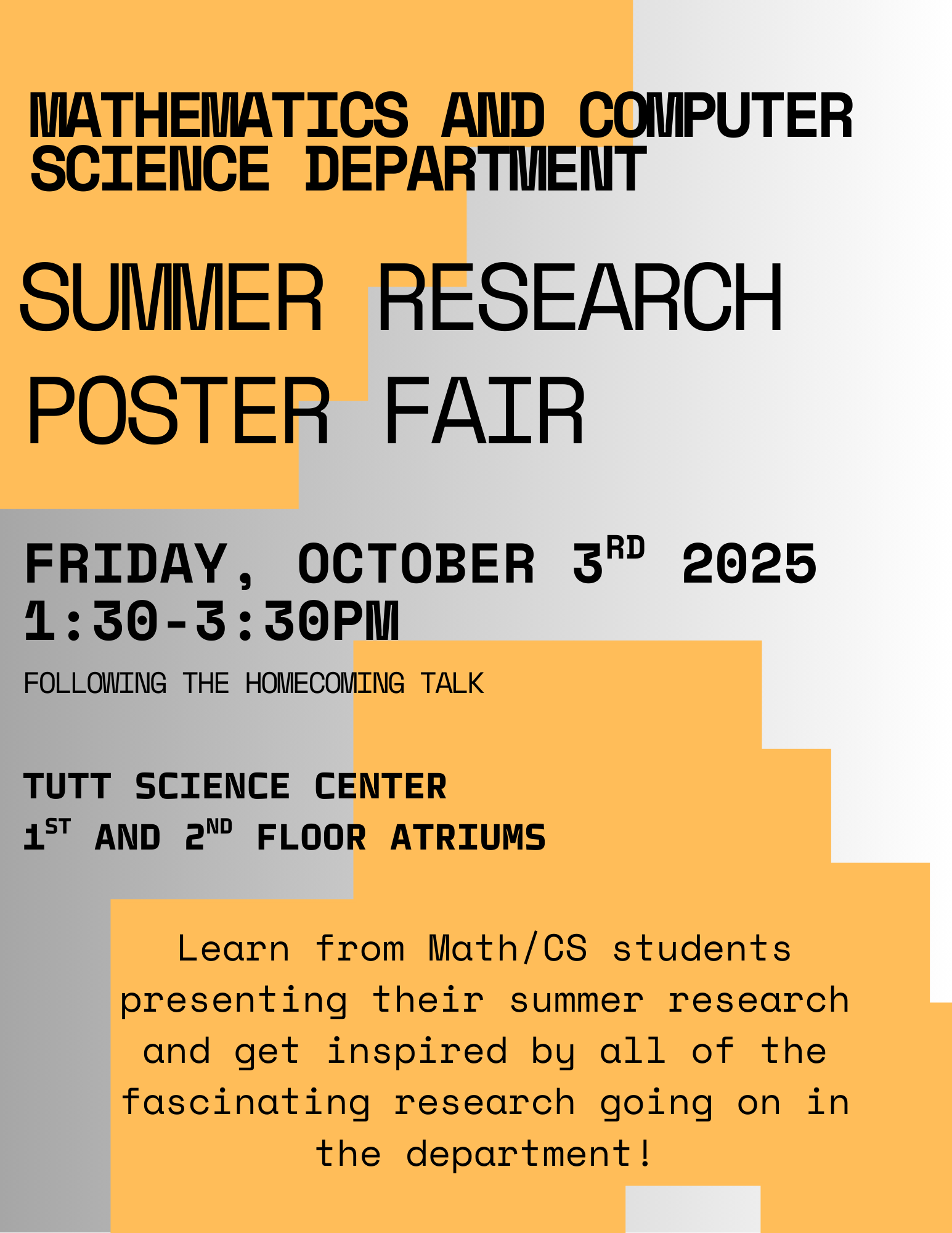
8/29/25 Ice Cream Social
Report an issue -
Last updated: 01/14/2026



